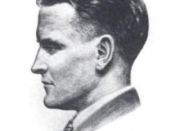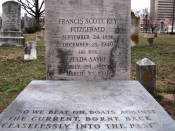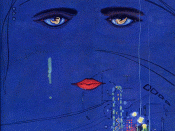The desire to reinvent one's self may be attributable to numerous social considerations, including the financial status, social stance, and physical attractiveness of a person. Ultimately, the strive to become one with perfection manages to surpass more noble, realistic aspirations. The unrestrained yearning to construct an admirable identity causes us to loose our identity rather than enhance it. Jay Gatsby from F Scott Fitzgerald's "The Great Gatsby" and Tom Ripley from Anthony Minghella's "The Talented Mr Ripley" are two constructed examples of men who stop at nothing in order to undergo a transformation from being working-class strugglers to rich gentlemen. The longing to develop the characteristics necessary to their acceptance within upper-class society most definitely gives new meaning to the word dedication. While Gatsby and Tom share a likeness in the devotion to their self adaptation, Gatsby aims to repeat the past, whereas Tom seeks to create a future.
F Scott Fitzgerald creates Jay Gatsby to be an emblem of the disintegration of the American dream in the early 1920's, a time of unprecedented prosperity and material excess. Gatsby is a character who resorted to criminal dealings in order to acquire great wealth and begin the process of self-reinvention. Despite this, Fitzgerald constructs Gatsby to be a favourable character through the employment of numerous discourses such as the romantic dreamer, the war hero, the Oxford chap, and the wealthy gentleman. Intricate symbolism is utilized throughout the novel to represent reality, however. They include the green light, the mantelpiece clock, and Gatsby's library.
In order to win back the love of Daisy, Gatsby decides to reinvent himself to conform with upper-class society. He irrationally believes that the past may be repeated. Gatsby devotes his entire existence to perusing money and status. When he manages to attain...


